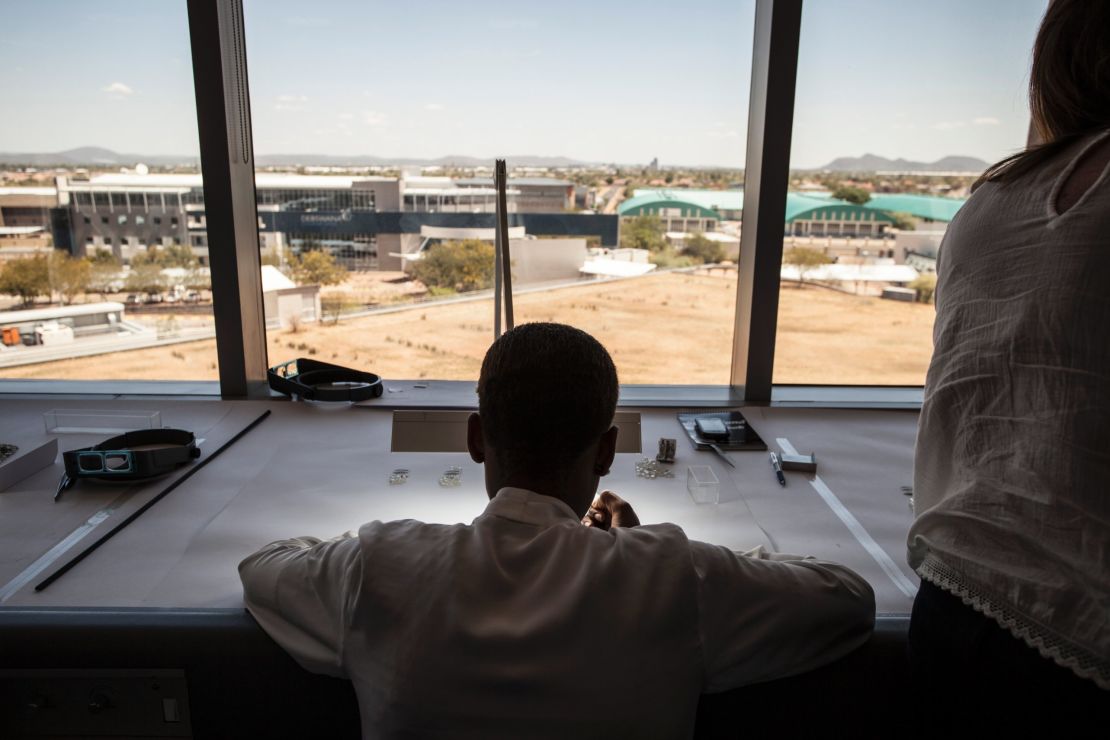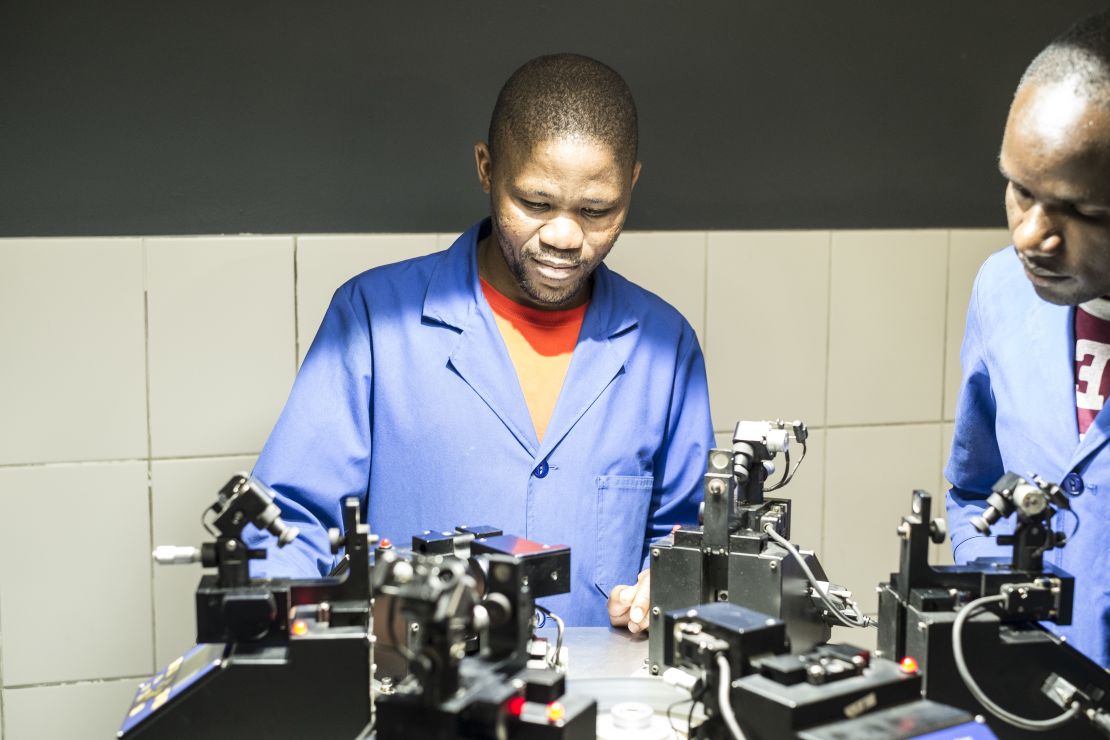Story highlights
The Jwaneng mine was opened in Botswana in 1982
Its current production output is about 10.6 million carats per year, or just over 2,100 kilos of diamonds
Debswana’s Jwaneng mine is a giant cauldron of pale dust, 2 kilometers across at its widest point and patrolled by colossal 300-tonne trucks that labor up the terraced slopes.
The operation, owned as a joint venture between De Beers and the government of Botswana, is the richest diamond mine in the world and, as managing director Albert Milton says, “one of the most important assets in the country.”
Nicknamed “the Prince of Mines”, Jwaneng was opened in 1982, as the diamond trade propelled Botswana from one of the poorest countries on earth to one of Africa’s wealthiest.
The mine’s current production output is about 10.6 million carats per year, or just over 2,100 kilos.
Today, diamonds make up more than 60% of Botswana’s exports, and nearly 25% of its gross domestic product.
Unlike many other countries that are similarly dependent on a single export, Botswana has avoided the “resource curse” of poor governance and slow economic development. By regional standards, its public services are strong, education is free, and corruption is largely in check.
‘Good luck’

“There are many examples of countries that have had the good luck and then made a complete mess of it.
Botswana has avoided that, and it has been translated into a general increase in living standards, particularly in the fast expansion in the provision of public services,” says Keith Jefferis, one of the country’s leading economists and a former deputy governor of its central bank.
However, he says, the good times cannot last forever. Unemployment in the country is persistently high, and the mechanized, capital-intensive mining industry does not create many jobs.
Botswana needs to figure out how to move away from its dependence on exporting rough diamonds – a calculation that has been given greater impetus by economic slowdowns in China and India, which are both key markets for the stones.
The largest sorting facility in the world
De Beers, the world’s largest producer of rough diamonds, moved its “sightholder sales” – the facility through which it sells boxes of rough diamonds to its exclusive client list of major buyers – to Gaborone in 2013, as part of a new deal with the government.
De Beers secured a 10-year contract to sell Debswana’s stones; the government got a major investment.
“They wanted more economic activity here, we wanted a longer contract, and we were able to come to an accommodation that we were both happy with,” says Bruce Cleaver, the company’s executive head of strategy.
The facility, a high-tech, high-security building on the road to Gaborone airport, handles stones from De Beers’ mines in Namibia, South Africa and Canada, as well as from local mines. It is the largest sorting and handling operation in the world, and in its quiet, brightly-lit rooms, a mixture of international and local specialists examine mounds of rough diamonds underneath banks of security cameras.
Ten times a year, the diamonds are sold in ‘sights’. Under local laws, diamonds from Botswana must be cut and polished locally – part of the government’s strategy to use its mining industry to create jobs in manufacturing.
Factory slowdown

There are now around 20 factories cutting and polishing diamonds locally, although the industry has been struggling this year. An over-supply of cut and rough diamonds at retailers and in the processing industry means that manufacturers have had to scale back. Many jobs have been lost, and several factories have shut entirely.
There are signs, however, that a turnaround could be underway. In September, KGK Diamonds, a major global buyer and processor of diamonds, opened a factory in Gaborone.
“It has been a bit against the tide, what we are doing,” says Sandeep Kothari, the company’s managing director.
Kothari says that the company’s decision was based on a long-term view that Botswana will become a hub for the industry, based on the proximity of Africa’s largest supply of stones. Although power and water shortages have created challenges, the government’s drive for ‘beneficiation’ – the addition of value to the stones locally – means that they have been very supportive of the investment.
“These challenges get overcome by the other facilities that the government provides, in terms of other infrastructure developments,” Kothari says. “The government goes out of its way to help you set up businesses.”
Botswana has a reputation as one of Africa’s easiest places to do business, with an open and well-governed economy. However, the country has a long way to go before it is able to diversify away from its dependence on diamonds.
Onkokame Kitso Mokaila, the country’s minister of minerals, energy and water resources, says that Botswana needs to bet on education and human capital development.
“Education is a platform. Without education you are doomed,” Mokaila says. “Our grandparents and our parents weren’t as hungry for change as we are. A little bit of change was good enough for them. But our children… want free wifi everywhere. They want broadband. They want technology here and now. They want to be the leaders of industry. And that is what the next discussion should be about. How do we get Botswanans into positions where they can lead?”












